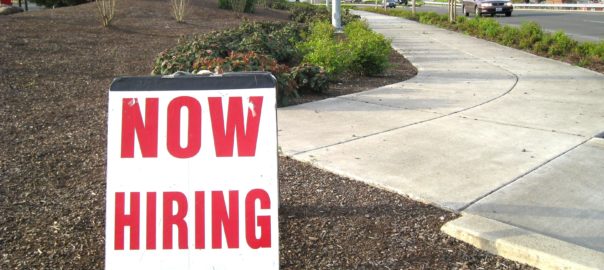The figures for Americans claiming unemployment benefits show a steep drop, despite predictions of an increase. This could suggest that the U.S. labor market is staying strong, regardless of the significant slowdown in job growth in March. Initial claims for unemployment benefits dropped by 1,000 to 234,000 for the week ending April 8, according to the Labor Department. This is the third consecutive weekly drop in claims, which is just a little higher than the 44-year low of 227,000 reached in February.
U.S. hiring slumped in March
But hiring in the U.S. slumped last month, with only 98,000 jobs added to the labor market. These government figures are the lowest in almost a year. Economists blame winter storms hitting employers and a previous surge in new jobs, leading to businesses pausing further recruitment plans. But other data suggests it may have just been a brief fluctuation, rather than signs of a deeper economic decline. However, the U.S. did see 178,000 new jobs added over the last three months. This is significantly more than economists believe to be necessary to keep up with population growth.
Unemployment benefit claims
But despite the lack of new jobs created, and the loss of thousands of retail jobs, unemployment benefit claims across the U.S. fell below 300,000 for 110 consecutive weeks. This is the longest period since the 1970s and a level usually linked to a relatively healthy labor market. It’s usual for the number of claims to vary around this time of year, due to the variation in timings of the Easter holidays. A better measure of the labor market and benefit claims is generally working on a four-week moving average, which tends to eliminate week-to-week volatility. Using this method, claims fell by 3,000 to 247,250. This low level of claims could suggest that March’s slowdown of the job market, was simply a temporary deviation from normal, and the job market continues to tighten.
Weather hits business
January and February of this year experienced unseasonably warm weather, boosting many industries. The construction industry for example, added more jobs than it had done in 10 years, thanks to the second warmest February recorded. However, March experienced a cold winter storm which hit the East Coast and Midwest, impacting on businesses and employment. Businesses and economists hope that March’s decline is just a blip, rather than the start of a trend. But winter storms could have cut as many as 60,000 jobs in March, particularly in industries most affected by the weather such as construction, retail, leisure and hospitality.
Retail industry hit with job losses
The retail industry suffered around 30,000 job losses. And while the colder weather may have played a significant part, economists suggest that the job losses could be down to big industry changes. An increasing number of stores are losing business to online stores like Amazon. A number of traditional retail stores such as American Apparel, Macy’s and J.C. Penney have all announced store closures recently.
Good news for some industries
But while the figures are disappointing for some industries, the professional and business services industry was responsible for a large proportion of the hiring in March, adding around 56,000 new jobs. Furthermore, the mining and health care sectors also saw some strong growth.

